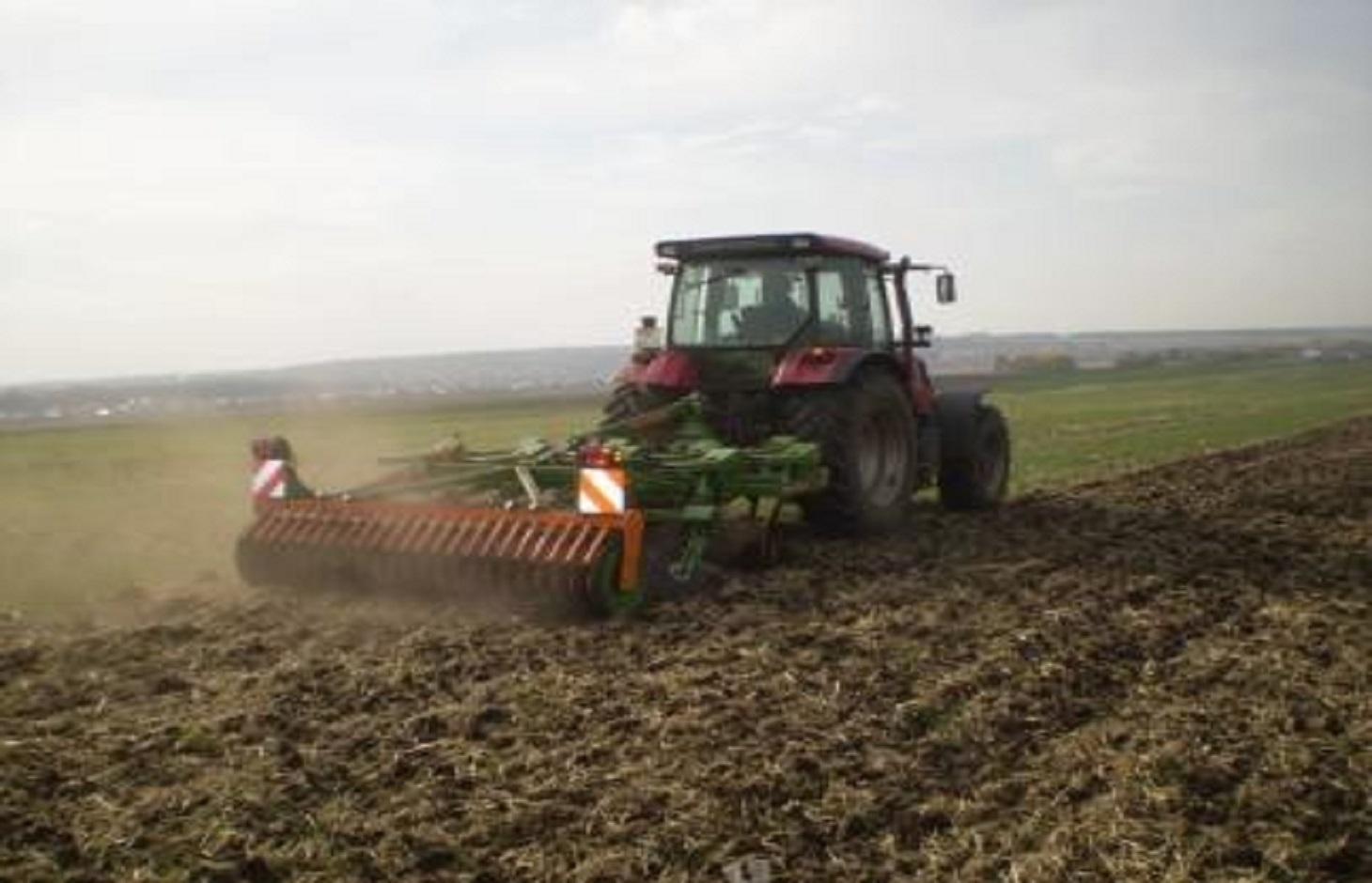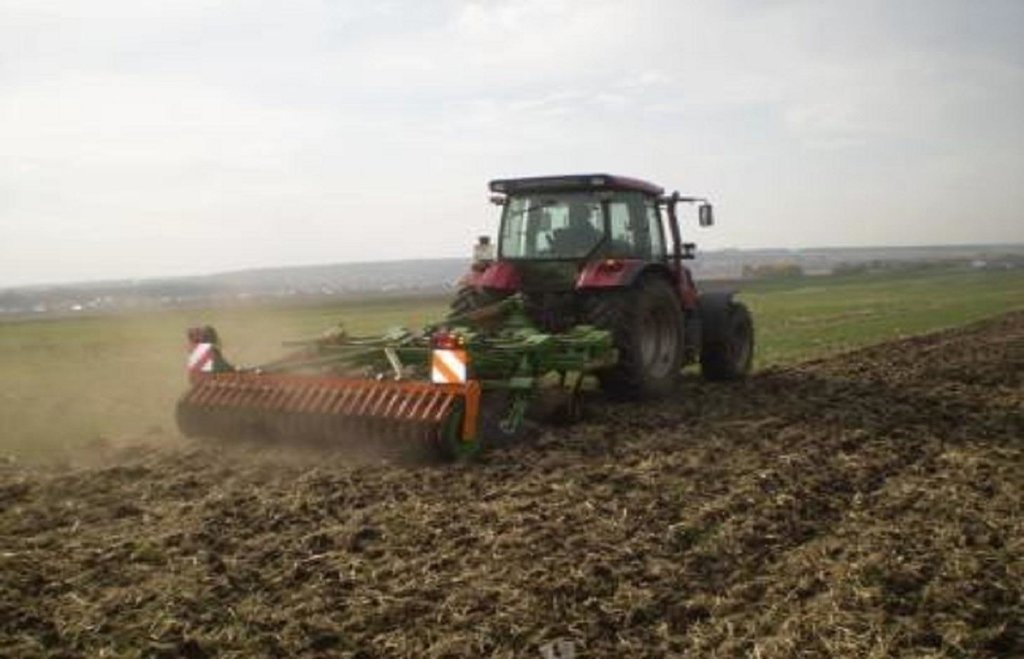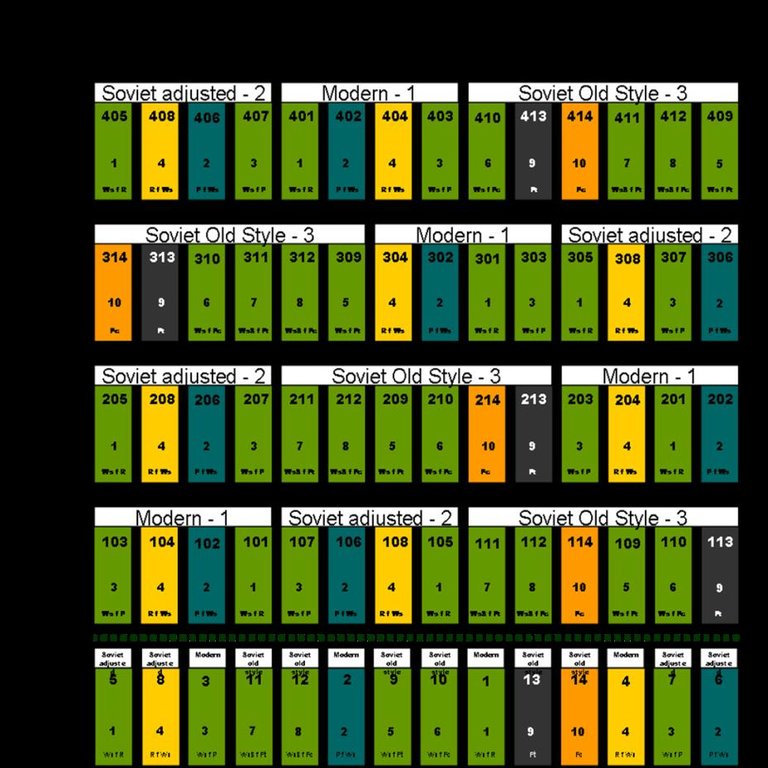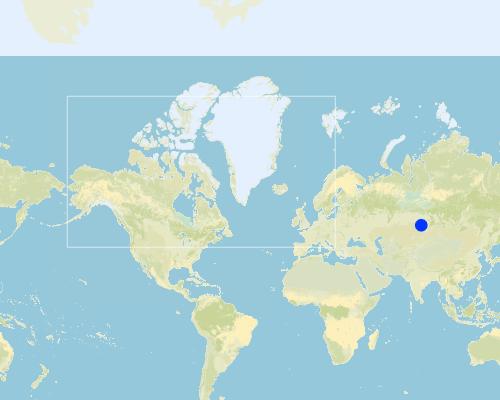Minimum Tillage [ОХУ]
- Шинийг нээх:
- Шинэчлэх:
- Эмхэтгэгч: Peter Liebelt
- Хянан тохиолдуулагч: –
- Хянагчид: Alexandra Gavilano, Deborah Niggli, David Streiff
Минимальная обработка
technologies_1315 - ОХУ
Бүлгүүдийг үзэх
Бүгдийг дэлгэх Бүгдийг хаах1. Ерөнхий мэдээлэл
1.2 Технологийг үнэлэх, баримтжуулах ажилд хамаарах мэдээлэл өгсөн хүмүүс, байгууллагуудын холбоо барих мэдээлэл
Технологи баримтжуулах/үнэлэх ажилд дэмжлэг үзүүлсэн төслийн нэр (шаардлагатай бол)
Book project: Making sense of research for sustainable land management (GLUES)Технологи баримтжуулах/үнэлэх ажилд дэмжлэг үзүүлсэн төслийн нэр (шаардлагатай бол)
Sustainable land management in the Russian steppes (KULUNDA / GLUES)1.3 ВОКАТ-аар баримтжуулсан өгөгдлийг ашиглахтай холбоотой нөхцөл
Мэдээллийг хэзээ (газар дээр нь) цуглуулсан бэ?
23/06/2016
Эмхэтгэгч болон гол мэдээлэгч хүн(хүмүүс) WOCAT аргачлалаар баримтжуулсан мэдээллийг ашиглахтай холбоотой нөхцлийг хүлээн зөвшөөрсөн:
Тийм
1.4 Технологи тогтвортой гэдгийг баталгаажуулах
Энэ технологийг газрын доройтлыг бууруулж, газрын тогтвортой менежментийг хангахад тохиромжтой гэж үзэж болох уу?
Үгүй
1.5 ГТМ-ийн Арга барилын талаархи санал асуулгын(д) суурь мэдээлэл
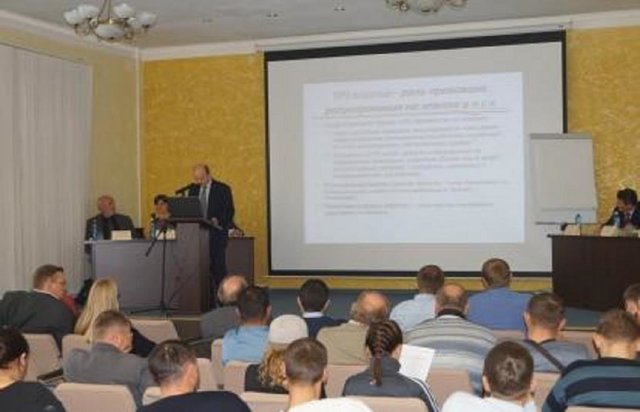
Vocational Training [ОХУ]
Regular in-service training of land use specialists and farm managers in the fields of sustainable land use management, and monitoring in the agrarian sector.
- Эмхэтгэгч: Peter Liebelt
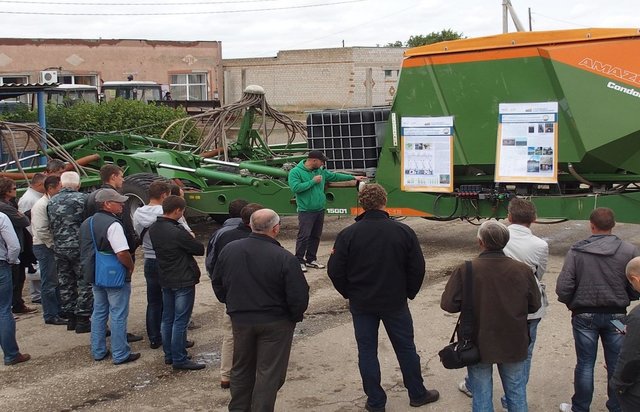
Field days [ОХУ]
Field days are events for regional stakeholders, mainly farmers in the study area, to discuss their demands regarding scientific help, and to be informed about the activities and results of new methods and technologies for conservation agriculture.
- Эмхэтгэгч: Peter Liebelt
2. ГТМ Технологийн тодорхойлолт
2.1 Технологийн товч тодорхойлолт
Технологийн тодорхойлолт:
Minimum tillage is a one-pass operation combined with sowing, using a classic Russian seeder modified for seedbed preparation and soil mixing. It can include shallow stubble cultivation after harvesting.
2.2 Технологийн дэлгэрэнгүй тодорхойлолт
Тодорхойлолт:
Minimum tillage is a key element of the "adapted Soviet cropping system", which aims at more sustainable land use but based on predominantly local technologies. For successful implementation of minimum tillage, adaption of the whole cropping system is required, including crop rotation. Rotation includes a succession of cereal crops (e.g. spring wheat), legumes (peas), and oil seed crops. Stubble cultivation in autumn is best performed with the "Catros" compact disc harrow for a quick, shallow operation. Seedbed preparation is carried out using a classic Russian seeder modified with wing shares for shallow seedbed preparation including soil mixing. In general, the performance of this drill is very close to that of a cultivator.
Minimizing tillage, saves time and fuel, and also helps to reduce evaporation, as well as protecting the soil against erosion. Shallow tillage with disc harrows after harvest ensures better stubble mixing and stimulates the germination of weed seeds. The adapted seeder, SZS 2.1, works with wing shares that open the soil and place the seed. Thus traditional deep tillage operations for the preparation of the seedbed can are omitted: that helps to reduce costs. With respect to crop protection, the first and most important element is to implement a full crop rotation. To control late germinating weeds and seeds of the previous crop, a disc harrow is used for shallow cultivation – this can be supplemented by the application of a non-selective herbicide if there is germination - to avoid the risk of flowering before the hard frost sets in. Fertilization becomes more important, because of the decreased mineralization rate under minimized soil tillage, especially at the beginning of the conversion of the cropping system.
The Technology including crop rotation was tested in the field in 4 test plots with 4 repetitions at the test site in Poluyamki. Results showed that the intensity of soil tillage and seeding methods used had a great influence on crop establishment and expected yields. It was demonstrated that minimizing tillage leads to higher water use efficiency and highest yields. Positive effects were also observed regarding soil structure and soil fertility already after 3 years. Minimized soil disturbance led to higher aggregate stability, which leads to a lower risk of wind erosion, increased soil organic carbon storage and soil fertility as well as available soil water content. The adapted Soviet system is more profitable, due to higher gross margins.
The test site in Poluyamki is located in the dry steppe of the border region next to Kazakhstan, where, due to the climatic conditions, no natural afforestation occurs, and the planted windbreaks don’t grow vigorously due to the prevailing aridity. The annual precipitation is under 300 mm a year. Probably the greatest climatic influence factor is the precipitation - in terms of quantity and space/ time distribution and, due to high summer temperatures, the high rates of evapotranspiration. The total yearly precipitation rate is the primary yield-limiting factor in all steppe regions. The ratio between precipitation and evaporation is negative. In the late weeks of spring, prolonged droughts must be expected in 5-year cycles, limiting germination and crop establishment. The soils are classed among those of cool-tempered grasslands. Due to their physical and chemical characteristics, these soils (Chernozems and Kastanozems) have high agronomic potential.
2.3 Технологийн гэрэл зураг
2.5 Энэ үнэлгээнд хамрагдсан технологийг хэрэгжүүлсэн улс орон/ бүс нутаг/ байршил
Улс:
ОХУ
Улс/аймаг/сум:
Russian Federation/Altai Krai
Байршлын дэлгэрэнгүй тодорхойлолт:
Mikhaylovski district (Pavlovski district, Mamontovski district)
Тайлбар:
Boundary points of the Technology area: Centre latitude: _52° 4'3.00"N Centre longitude: 79°54'26.16"E Test site Poluyamki
Map
×2.6 Хэрэгжсэн хугацаа
Байгуулсан тодорхой оныг мэдэхгүй бол баримжаа хугацааг тодорхойл:
- <10 жилийн өмнө (саяхны)
2.7 Технологийн танилцуулга
Технологийг хэрхэн нэвтрүүлснийг тодорхойл:
- Туршилт/судалгааны үр дүн
Тайлбар (төслийн төрөл г.м.):
Already during the Soviet land use periode temporal,especially after the Virgin land campagne (1954-'63)efforts were made to minimize soil tillage intensity to obtain from conventional ploughing system. An important scientific thinker for this innovative farming systems was T. C. Malcev. But at this time the new approaches for minimized tillage systems were not seriously implemented in Russia. Only in the last decade a significant trend towards minimum soil tillage can be recodnized in the Russian agriculture
3. ГТМ технологийн ангилал
3.1 Технологийн үндсэн зорилго (ууд)
- үйлдвэрлэлийг сайжруулах
- газрын доройтлыг бууруулах, сэргийлэх, нөхөн сэргээх
3.2 Технологи нэвтрүүлсэн газрын одоогийн газар ашиглалтын хэлбэр(үүд)

Тариалангийн талбай
- Нэг наст үр тариа
Тайлбар:
Major land use problems (compiler’s opinion): The decrease of soil organic carbon content in the soils and loss of topsoil depth has led to a decrease in soil fertility. Additionally, the negative soil water balance due to the high summer temperatures and evaporation, and the high spatial and temporal variability of precipitation, is a serious problem relating to the lack of soil water.
Major land use problems (land users’ perception): The land users who were involved in the studies and implemented the new farming practices have a similar opinion. But there are still a lot of farmers that underestimate the ecological risks of soil degradation resulting from conventional/ traditional soil management.
3.3 Газар ашиглалтын тухай нэмэлт мэдээлэл
Технологи хэрэгжүүлсэн газрын усан хангамж:
- Байгалийн усалгаатай
Жилд ургамал ургах улирлын тоо:
- 1
Тодорхойлно уу:
Longest growing period in days: 110, Longest growing period from month to month: May-October
3.4 Технологи ГТМ-ийн аль бүлэгт хамаарах вэ
- хөрсийг бага гүнд боловсруулах
3.5 Технологийн хамрах талбай
Технологи өргөн дэлгэрсэн эсхийг тодорхойл:
- газар дээр жигд тархсан
Технологи газар нутгийн хэмжээнд жигд тархсан бол түүний эзлэх талбайг дундажаар тооцож тэмдэглэ:
- 0.1-1 км2
Тайлбар:
Total area covered by the SLM Technology is 0.13 m2.
The total investigation area of the SLM Technology “Minimum Tillage” refers to the test site areas: 1. Poluyamki, Mikhaylovskiy Rayon: 13ha ; 2. Pervomayskiy, Mamontovskiy Rayon: 10ha and 3. Komsomolskiy, Pavlovskiy Rayon: 3ha all managed by Minimum Tillage. This questionnaire is related to the test site in Poluyamki, Mikhaylovskiy Rayon
3.6 Технологийг бүрдүүлэх ГТМ арга хэмжээ

Агрономийн арга хэмжээ
- А1: Ургамал/ хөрсөн бүрхэвч
- А2: Органик нэгдэл/ хөрсний үржил шим
- А3: Хөрсний гадаргыг сайжруулах

Менежментийн арга хэмжээ
- М2: Ашиглалтын менежмент/эрчимийг өөрчлөх
Тайлбар:
Type of agronomic measures: better crop cover, mulching, green manure, mineral (inorganic) fertilizers, rotations / fallows, minimum tillage, non-inversion tillage
3.7 Технологид харгалзах газрын доройтлын төрөл

хөрс усаар эвдрэх
- Wt: Хөрсний гадаргын угаагдал

хөрс салхиар эвдрэх
- Et: Хөрсний гадаргын зөөгдөл
- Ed: Хөрсний салхиар үлээгдэх, хуримтлагдах
- Eo: Салхины элэгдлийн дам нөлөө

хөрсний химийн доройтол
- Cn: Үржил шим ба ялзмаг буурах (элэгдлийн шалтгаангүй)

хөрсний физик доройтол
- Pc: Хөрс дагтарших
Тайлбар:
Main causes of degradation: soil management (Conventional (intensive) soil tillage by phloughing), crop management (annual, perennial, tree/shrub) (Bare fallow (without any vegetation cover)), wind storms / dust storms (Strong wind and storm (local name: Sukhovey) from the south-western central-Asiatic semi-desert regions cause a higher risk of wind erosion especially on traditional cropland without plant cover), droughts (The frequently occurring early-summer drought periods are particularly problematic for agricultural production)
Secondary causes of degradation: education, access to knowledge and support services (The linkages between research, education, extension services and end users need to strengthened, for better knowledge creation and transfer. Need for more efficient and qualified advisory service), Capital for investments (Lack of capital for investment in modern adapted agricultural technologies)
3.8 Газрын доройтлоос урьдчилан сэргийлэх, сааруулах ба нөхөн сэргээх
Газрын доройтолтой холбоотойгоор Технологи ямар зорилго тавьсан болохыг тодорхойл:
- газрын доройтлоос урьдчилан сэргийлэх
- Газрын доройтлыг бууруулах
4. Техникийн нөхцөл, хэрэгжүүлсэн үйл ажиллагаа, материал ба зардал
4.1 Технологийн техник зураг
4.2 Техникийн үзүүлэлт/ техникийн зургийн тайлбар
Soviet Seeder SZS 2.1 with wing shares for shallow soil mixing and seed bed preparation.
Location: Poluyamki. Altai Krai
Date: 20.05.2015
Technical knowledge required for field staff / advisors: high
Technical knowledge required for land users: high
Main technical functions: improvement of topsoil structure (compaction), increase in organic matter, increase of infiltration, increase / maintain water stored in soil, sediment retention / trapping, sediment harvesting
Secondary technical functions: control of raindrop splash, control of dispersed runoff: retain / trap, control of dispersed runoff: impede / retard, control of concentrated runoff: retain / trap, control of concentrated runoff: impede / retard, improvement of surface structure (crusting, sealing), improvement of subsoil structure (hardpan), stabilisation of soil (eg by tree roots against land slides), increase in nutrient availability (supply, recycling,…), reduction in wind speed, increase of biomass (quantity)
Better crop cover
Material/ species: Crop rotation without bare fallow
Mulching
Material/ species: stubble cultivation with disc harrow or harrow weeder
Quantity/ density: 1/year
Green manure
Material/ species: pea
Mineral (inorganic) fertilizers
Material/ species: fertilization with calcium ammonium nitrate
Quantity/ density: yearly
Remarks: (100kg/ha (spring wheat and rape), 50kg (pea)
Rotations / fallows
Material/ species: wheat-pea-wheat-raps
Minimum tillage
Material/ species: Catros (disc harrow) and Seeder СЗС2.1 (wing shares)
Remarks: Catros (depth: 10 cm) after harvest (autumn) and Seeder in May)
Non-inversion tillage
Material/ species: Catros (disc harrow) and Seeder СЗС2.1 (wing shares)
Remarks: Catros (depth: 10 cm) after harvest (autumn) and Seeder in May)
4.6 Арчилгаа/ урсгал үйл ажиллагаа
| Үйл ажиллагаа | Арга хэмжээний төрөл | Хугацаа/ давтамж | |
|---|---|---|---|
| 1. | Stubble cultivation | Агрономийн | september |
| 2. | Seeding | Агрономийн | late april/early may |
| 3. | Seeding (extension) | Агрономийн | |
| 4. | Pest management | Агрономийн | period of vegetation |
| 5. | Pest management (extension) | Агрономийн | |
| 6. | Harvest | Агрономийн | september |
4.7 Арчилгаа/урсгал ажилд шаардагдсан зардал, хөрөнгийн өртөг (нэг жилд)
| Зардлын нэр, төрөл | Хэмжих нэгж | Тоо хэмжээ | Нэгжийн үнэ | Зардал бүрийн нийт өртөг | Нийт дүнгээс газар ашиглагчийн төлсөн % | |
|---|---|---|---|---|---|---|
| Хөдөлмөр эрхлэлт | labour | ha | 1.0 | 4.34 | 4.34 | 100.0 |
| Тоног төхөөрөмж | machine use | ha | 1.0 | 37.4 | 37.4 | 100.0 |
| Тоног төхөөрөмж | fuel | ha | 1.0 | 47.34 | 47.34 | 100.0 |
| таримал материал | seeds | ha | 1.0 | 25.3 | 25.3 | 100.0 |
| Бордоо ба биоцид | fertilizer | ha | 1.0 | 30.83 | 30.83 | 100.0 |
| Бордоо ба биоцид | pesticides | ha | 1.0 | 9.42 | 9.42 | 100.0 |
| Технологийн арчилгаа/урсгал үйл ажиллагаанд шаардагдах нийт үнэ өртөг | 154.63 | |||||
Тайлбар:
The costs refers to 1ha land of the test field in Poluyamki.
4.8 Зардалд нөлөөлж байгаа хамгийн чухал хүчин зүйл
Өртөг, зардалд нөлөөлөх гол хүчин зүйл:
The highest cost factors of minimum tillage are equipment, fuel, fertilizer and seeds. Compared to the conventional deep ploughing often without fertilizer application, fertilizer and pesticides are the main additional cost factors.
5. Байгаль ба нийгмийн нөхцөл
5.1 Уур амьсгал
Жилийн нийлбэр хур тундас
- < 250 мм
- 251-500 мм
- 501-750 мм
- 751-1,000 мм
- 1,001-1,500 мм
- 1,501-2,000 мм
- 2,001-3,000 мм
- 3,001-4,000 мм
- > 4,000 мм
Агро-уур амьсгалын бүс
- хагас хуурай
Thermal climate class: temperate
5.2 Гадаргын хэлбэр
Дундаж налуу:
- хавтгай (0-2 %)
- бага зэрэг налуу (3-5 %)
- дунд зэрэг налуу (6-10 % )
- хэвгий (11-15 %)
- налуу (16-30 %)
- их налуу (31-60 % )
- эгц налуу (>60 %)
Гадаргын хэлбэр:
- тэгш өндөрлөг / тал
- нуруу
- уулын энгэр
- дов толгод
- бэл
- хөндий
Өндрийн бүслүүр:
- 0-100 д.т.д. м.
- 101-500 д.т.д. м.
- 501-1,000 д.т.д м.
- 1,001-1,500 д.т.д м.
- 1,501-2,000 д.т.д м.
- 2,001-2,500 д.т.д. м.
- 2,501-3,000 д.т.д. м.
- 3,001-4,000 д.т.д м.
- > 4,000 д.т.д. м.
5.3 Хөрс
Хөрсний дундаж зузаан:
- маш нимгэн (0-20 см)
- нимгэн (21-50 см)
- дунд зэрэг зузаан (51-80 см)
- зузаан (81-120 cм)
- маш зузаан (>120 cм)
Хөрсний бүтэц (өнгөн хөрс):
- дундаж (элсэнцэр, шавранцар)
Өнгөн хөрсөнд агуулагдах ялзмаг:
- дунд (1-3 % )
5.4 Усны хүртээмж ба чанар
Гүний усны түвшин:
5-50 м
5.6 Технологи нэвтрүүлсэн газар ашиглагчдын тухай мэдээлэл
Үйлдвэрлэлийн системийн зах зээлийн чиг баримжаа:
- худалдаа наймааны/ зах зээлийн
Бусад эх үүсвэрээс олох орлого:
- Нийт орлогын 10 %-иас доош
Чинээлэг байдлын түвшин:
- дундаж
- маш чинээлэг
Хувь хүн эсвэл бүлэг:
- ажилтан (компани, засгийн газар)
Механикжилтын түвшин:
- механикжсан / мотортой
Хүйс:
- эрэгтэй
Газар ашиглагчдын бусад шинж чанарыг тодорхойл:
Land users applying the Technology are mainly Leaders / privileged
There are generally less woman than men in rural regions caused by rural-urban migration. Furthermore, jobs in the agricultural sector are not so attractive for woman.
Population density: 10-50 persons/km2
Annual population growth: negative
5.7 Технологи нэвтрүүлсэн газар ашиглагчийн өмчилж буй, эзэмшиж буй, түрээсэлж буй эсвэл ашиглаж буй (ашиглах эрх) газрын талбай
- < 0.5 га
- 0.5-1 га
- 1-2 га
- 2-5 га
- 5-15 га
- 15-50 га
- 50-100 га
- 100-500 га
- 500-1,000 га
- 1,000-10,000 га
- > 10,000 га
Энэ талбай том, жижиг, дунд алинд хамаарах вэ (орон нутгийн нөхцөлд харгалзуулна уу)?
- том-хэмжээний
5.8 Газар эзэмшил, газар ашиглах эрх, ус ашиглах эрх
Газар өмчлөл:
- төрийн
- хувь хүн, өмчийн гэрчилгээгүй
Газар ашиглах эрх:
- нэгдлийн хэлбэрээр (зохион байгуулалттай)
- түрээсийн хэлбэрээр
Ус ашиглах эрх:
- нээлттэй хүртэх (зохион байгуулалтгүй)
Тайлбар:
state: 45%, the data refer to the Altai Krai
5.9 Дэд бүтэц, үйлчилгээний хүртээмж
эрүүл мэнд:
- ядуу
- дунд зэргийн
- сайн
боловсрол:
- ядуу
- дунд зэргийн
- сайн
техник зөвлөгөө:
- ядуу
- дунд зэргийн
- сайн
хөдөлмөр эрхлэлт (жишээ нь, ХАА-аас өөр):
- ядуу
- дунд зэргийн
- сайн
зах зээл:
- ядуу
- дунд зэргийн
- сайн
эрчим хүчний хангамж:
- ядуу
- дунд зэргийн
- сайн
зам тээвэр:
- ядуу
- дунд зэргийн
- сайн
усан хангамж ба ариутгал:
- ядуу
- дунд зэргийн
- сайн
санхүүгийн үйлчилгээ:
- ядуу
- дунд зэргийн
- сайн
6. Үр нөлөө ба дүгнэлт
6.1 Технологийн талбайд үзүүлсэн нөлөө
Нийгэм-эдийн засгийн үр нөлөө
Үйлдвэрлэл
газар тариалангийн үйлдвэрлэл
Тайлбар/ тодорхой дурьдах:
In the first years after the change of the cropping system, there is an increased risk of crop losses due not correct/suitable management of the new cropping system
Орлого, зарлага
ХАА-н зардал
Тайлбар/ тодорхой дурьдах:
mainly for initial investments and herbicides in the first years
тухайн аж ахуйн орлого
Тайлбар/ тодорхой дурьдах:
but increase of costs for herbicides and fertilizer; decrease for fuel and labor
Нийгэм-эдийн засгийн бусад үр нөлөө
Increase use of herbicide applications
Тайлбар/ тодорхой дурьдах:
particular necessary in the first years after the imlementation of the minimum tillage system
Нийгэм-соёлын үр нөлөө
хүнсний аюулгүй байдал/ өөрийн хэрэгцээг хангах
Тайлбар/ тодорхой дурьдах:
In general yes, but food security is not a problem in this region.
маргааныг шийдвэрлэх
contribution to human well-being
Тайлбар/ тодорхой дурьдах:
Technology makes a contribution to the long-term productivity of the soil – the most important factors in the rural areas of the Kulunda region. Furthermore, it leads to an increase in efficiency and to an improvement of the economic situation of farms, which might lead to a decrease in out-migration of the youth.
Экологийн үр нөлөө
Усны эргэлт/ илүүдэл
гадаргын урсац
ууршилт
Хөрс
хөрсний чийг
хөрсөн бүрхэвч
хөрс алдагдах
хөрс нягтрах
шимт бодисын эргэлт/ сэргэлт
хөрсний органик нэгдэл/ хөрсөнд агуулагдах карбон
Биологийн олон янз байдал: ургамал, амьтан
ашигт төрөл зүйл
Уур амьсгал болон гамшгийн эрсдлийг бууруулах
нүүрстөрөгч ба хүлэмжийн хийн ялгаруулалт
салхины хурд
Экологийн бусад үр нөлөө
Increased use of herbicide application
Тайлбар/ тодорхой дурьдах:
Especially in the first years after the implementation of the minimum tillage system.
6.2 Технологийн талбайн гадна үзүүлсэн үр нөлөө
Усны хүртээмж
Тайлбар/ тодорхой дурьдах:
there is a higher content of soil moisture under minimum tillage than under traditional ploughing especially in dry weather periods / drought periods.
салхиар тээвэрлэгдэх хурдас
хөрш зэргэлдээ газарт учирах хохирол
6.3 Технологийн уур амьсгалын өөрчлөлт, цаг агаарын гамшигт үзэгдэлд өртөх байдал ба эмзэг байдал (газар ашиглагчийн бодлоор)
Уур амьсгалын аажим өөрчлөлт
Уур амьсгалын аажим өөрчлөлт
| Улирал | Уур амьсгалын өөрчлөлт/экстрим үзэгдлийн төрөл | Технологи түүний нөлөөг хэрхэн бууруулж байна? | |
|---|---|---|---|
| жилийн дундаж температур | Өсөлт | сайн |
Уур амьсгалаас хамаарах аюул (гамшиг)
Цаг уурын гамшигт үзэгдэл
| Технологи түүний нөлөөг хэрхэн бууруулж байна? | |
|---|---|
| орон нутгийн аадар бороо | сайн |
| орон нутгийн салхин шуурга | сайн |
Уур амьсгалын гамшиг
| Технологи түүний нөлөөг хэрхэн бууруулж байна? | |
|---|---|
| ган гачиг | сайн |
Уур амьсгалд хамаарах бусад үр дагавар
Уур амьсгалд хамаарах бусад үр дагавар
| Технологи түүний нөлөөг хэрхэн бууруулж байна? | |
|---|---|
| цргалтын хугацаа багасах | муу |
Тайлбар:
The increase of air temperature and wind lead to an increase of the evapotransporation rate and consequently, as well as rainfall decrease and droughts, to a decrease of soil water content that is one of the most important limiting factor in crop production. The minimization of soil tillage intensity helps to reduce the evapotranspiration rate and thus leads to a higher soil water content. The stubble slow down the wind, that protect the soil against erosion and reduce the evapotranspiration rate.
6.4 Өртөг ба ашгийн шинжилгээ
Бий болгох зардалтай харьцуулахад ямар ашиг өгсөн бэ (газар ашиглагчийн бодлоор)?
Богино хугацаанд эргэн төлөгдөх байдал:
нөлөө үл мэдэг
Урт хугацаанд эргэн төлөгдөх байдал:
эерэг
Арчилгаа/урсгал зардалтай харьцуулахад ямар ашиг өгсөн бэ (газар ашиглагчийн бодлоор)?
Богино хугацаанд эргэн төлөгдөх байдал:
бага зэрэг эерэг
Урт хугацаанд эргэн төлөгдөх байдал:
эерэг
6.5 Технологи нэвтрүүлэлт
Тайлбар:
100% of land user families have adopted the Technology without any external material support
The 3 farms/ sites where minimum tillage was tested were already interested in conservation technologies and were able to invest in new machinery, which is not representative of the whole Kulunda region. There is a moderate trend towards spontaneous adoption, but this trend depends on different natural and socioeconomic factors, like precipitation or the economic situation and financial power of the farmers.
There is a trend towards spontaneous adoption of the Technology, but this trend depends on different natural and socioeconomic factors like the precipitation or conditions an economic situation of the financial power of the farms. For example the drier the conditions, the more sense is to minimize the tillage. But there is a need to invest in new machinery. An advantage of the tested Adapted Soviet System in contrast to the Modern Soviet System is the less need for new machinery through the use of old Soviet machinery.
6.7 Технологийн давуу тал/боломжууд
| Эмхэтгэгч, бусад мэдээлэл өгсөн хүмүүсийн өнцгөөс тодорхойлсон давуу тал/боломжууд |
|---|
| Increase of soil aggregate stability and improved soil structure thus better erosion control and protection of soil organic matter will improve soil fertility and water holding capacity |
| Minimization of evaporation losses through the mulch layer |
| Protection of soil organisms thus ensuring natural soil forming processes |
| Lower input costs (materials, fuel, labour, time) and quicker field operations. |
| A great advantage of the tested ‘minimum tillage’ in contrast to ‘no till‘ is that the former needs no new machinery because of the use and adaptation of old Soviet machinery. |
6.8 Технологийн дутагдалтай/сул тал/аюул болон тэдгээрийг хэрхэн даван туулах арга зам
| Эмхэтгэгч, бусад мэдээлэл өгсөн хүмүүсийн өнцгөөс тодорхойлсон сул тал/ дутагдал/ эрсдэл | Тэдгээрийг хэрхэн даван туулах вэ? |
|---|---|
| Need for comprehensive system knowledge and risk of significant crop losses in case of incorrect implementation | Knowledge transfer, Capacity building and extension services, State support (subsidies for new technologies) |
| Application of chemical herbicides leads to higher costs and possible ecological risks | Selective spraying using the “Amaspot” system that is based on infrared detection of weeds. |
| Higher requirements for fertilizers, especially at the beginning, due to lower mineralization rates and less nutrient availability compared to conventional cultivation | Higher fertilizer application in the first years after conversion. |
| Challenging straw management that leads to higher risk of fungal infestation and poorer field crop emergence | Good straw management: effective straw chopping and spreading as well as stubble cultivation for an optimal straw/ soil ratio. |
7. Ном зүй ба холбоосууд
7.1 Мэдээлэл цуглуулсан арга/эх үүсвэр
- Хээрийн уулзалт, судалгаа
- Газар ашиглагчтай хийсэн ярилцлага
Холбоос ба модулууд
Бүгдийг дэлгэх Бүгдийг хаахХолбоосууд

Vocational Training [ОХУ]
Regular in-service training of land use specialists and farm managers in the fields of sustainable land use management, and monitoring in the agrarian sector.
- Эмхэтгэгч: Peter Liebelt

Field days [ОХУ]
Field days are events for regional stakeholders, mainly farmers in the study area, to discuss their demands regarding scientific help, and to be informed about the activities and results of new methods and technologies for conservation agriculture.
- Эмхэтгэгч: Peter Liebelt
Модулууд
Модуль байхгүй байна


